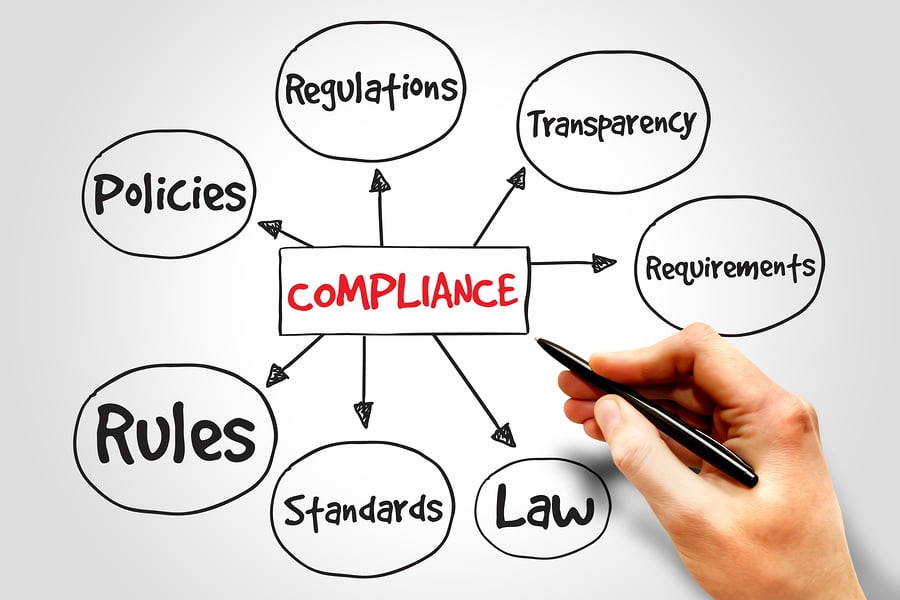Regulatory compliance shows up as one of the biggest challenges faced across all industry verticals. What is intimidating is the rising cost, number of resources and the time it takes to put together an effective compliance management system in any organization. It is not a ‘one size fits all’ solution so every organization has to go through the drill and experience its share of disasters, learning and evolution before it comes up with a system that is good enough, at least for the near future.
Such evolution, mind you, does not happen unless the senior management believes in the need to make compliance a way of life and extend this to other sections of the organization, be it operations, financials or human resources.
Reading: Not Just Frameworks For Compliance, Build The Culture Instead
While building a culture of compliance is a big challenge in itself, there are others that need to be addressed at both strategic and tactical levels. Identifying these problems early and taking corrective action will not only save money but also ensure that you have a system that is flexible to quickly accommodate future compliance requirements.
An interesting thing to note is that these challenges are found across all types of organizations, large and small – only the magnitude differs.
Clear and frequent communication of compliance policies
Just like advertisements on television, frequent communication is key to the success of any policy implementation. Frequent announcements and reminders are necessary to reinforce the need for guidelines and to communicate the consequences of not following them. However, organizations get too busy with their daily tasks and miss this critical requirement. No organization can progress if their communication fails; the case for compliance is no different.
What to do about it:
Have you thought of compliance training for your organization? It offers a great platform for communicating and building a compliance culture. Implement a compliance training calendar and make employees part of the training and execution program.
Rising Cost to ensure preparedness
Organizations are finding a steady increase in their compliance budgets thanks to the increasing regulatory and human resources compliance requirements. That said, it is not easy to demonstrate the effectiveness of a compliance program, other than saying it is a regulatory requirement. This argument leaves little room or interest for the CFO to back anything over and above the minimum prescribed regulatory requirements. This is especially true for the majority of the small and medium businesses that already run on a tight budget.
What to do about it:
Begin with industry best practices. Use these metrics to compare the progress of your organization. Create a quarterly review process with an eye on ROI improvement. Use compliance software that can capture the data and research to justify the benefits of the program. This will even help you present a case for additional budget.
Compliance siloes – Lack of a single view
Truth be told, compliance began as an imposition and not an internal wish. For most organizations, therefore, it began as a small project within business units where tasks were often monitored using excel sheets. These projects grew in sync with the size of the department and over a period of time you had multiple compliance projects working in isolation. There is often duplication of tasks and resources and more importantly, lack of a single view at the organizational level.
What to do about it:
It is the right time for the consolidation and centralization of your organization’s compliance management. But first, evaluate the right system/software that meets your reporting and monitoring needs. You don’t want to add one more piece of software to the discrete stack you already have. So find one that integrates well with all existing systems or one that can replace them.
Outdated software
This is often a byproduct of the compliance siloes we discussed earlier. Different departments use different pieces of software to suit their interim requirements without proper records of renewals and policy updates. It is like saying ‘we purchased software to monitor compliance activities in the organization but did not comply on upgrading it (aka the unethical cop)’. If this also extends to software used for daily operations of the business, it may lead to legal consequences, which need to be avoided at any cost.
What to do about it:
This clearly shows the compliance system has failed. It is the responsibility of the compliance head to ensure tracking and monitoring of all software renewals. It’s critical you repair this first before you take any other steps for compliance management. As mentioned earlier, you need to identify and evaluate the right compliance software vendor and build your compliance system bottom-up.
New challenges will show up as policies and regulations change. That’s the nature of the compliance beast and there is no escaping it. What will separate the men from the boys will be the way you tackle the problem rather than trying to put it away for too long. If you haven’t started on your compliance journey, you are already on the wrong side of things. But you do have the advantage of opting for the latest technology compared to your peers.
Join the conversation.
Share your comments and feedback with compliancefirst@compfie.com




